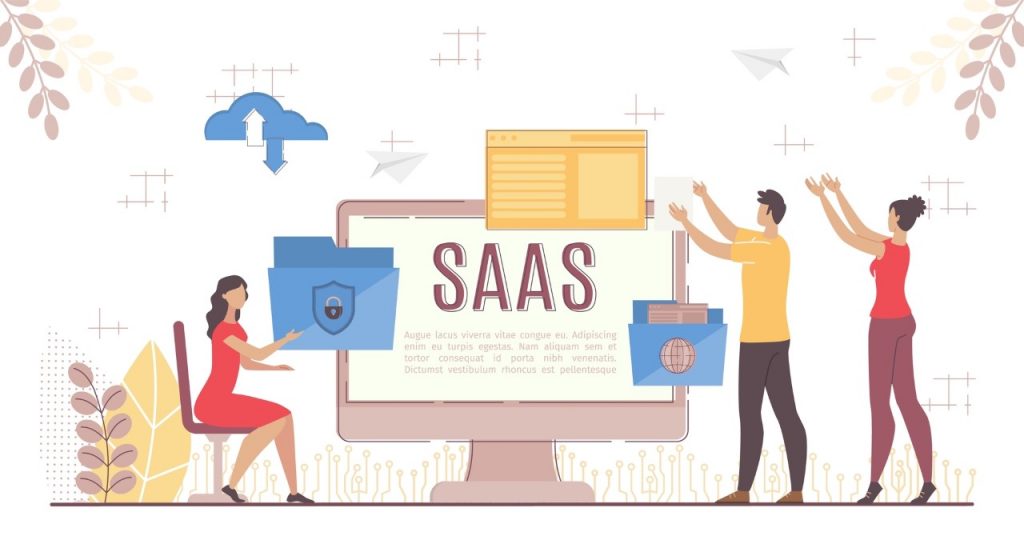- March 31, 2021
- Catagory SaaS
SaaS security is essential, remote work or not
Software-as-a-Service (SaaS) applications are especially appealing when you’ve got more of you’re your employees working from home, but it’s easy to fall into the trap of believing SaaS security is less vulnerable than the rest of your network security.
Although some SaaS security is baked into the applications by the software provider, the 50 per cent increase in cloud usage for enterprises across all industries in 2020 means the number of threats have increased exponentially, according to IBM Security’s 2020 Cost of a Data Breach Report. It found attacks directed at cloud services, particularly collaboration tools such as Office 365, have increased 630 per cent. Remote work due to the pandemic has been a big contributor to SaaS security incidents, as three quarters of survey respondents reported that discovery and recovery time from data breaches has significantly increased.

It’s not surprising that SaaS security is an increasing concern as threat actors will always go after applications, systems and tools that are popular with businesses and users—it increases the likelihood of success because for them, it’s a numbers game. The increase in attacks is a reminder that regardless of the cloud platform you choose, your provider does bring a lot to the table in terms of SaaS security. However, when you have more than one provider and multiple SaaS applications deployed, you must remember that SaaS security is a shared responsibility.
The increase in cloud and SaaS applications deployments coupled with a dramatic increase in remote workers means organizations need a framework to guide their SaaS security.
Complexity threatens SaaS security
When you have so many applications and systems in place, adequate SaaS security can be a challenge, even when cloud providers include their own security controls. Even without the uptick in remote work, endpoints have continued to grow as workers access data and applications from multiple devices from wherever is convenient for them.
With each and every worker, endpoint, and application added to the enterprise network, SaaS security becomes more susceptible to threats because the overall attack surface is larger. Because data is spread across many different applications and environments, the complexity and sprawl raises the risk of compliance and data breaches. Even before the pandemic hit, there was a growing need to bolster SaaS security as lines of business are increasingly spooling up applications as needed, independent of IT supervision—departments such as marketing, human resources, and finance all have their own SaaS applications accessing and managing critical business data and intellectual property.
Organizations may be inclined to add more and more security tools, but the more solutions you have in place, the more work there is to configure, maintain and update them. More people are needed to understand the interfaces and nuances of each and every security tool.
Without some sort of playbook or strategy, SaaS security can quickly become unmanageable.
SaaS security requires a framework and tools
It’s not realistic to have a single security solution to protect all data and applications, but your SaaS security strategy needs to be proactive, not reactive, and ensures your IT team isn’t overwhelmed by alerts from multiple dashboards.
One approach to keep your SaaS security posture robust is what research firm Gartner defines as SaaS Security Posture Management (SSPM), which is part of its SaaS Security Framework. SSPM tools allow for enhanced controls to better secure SaaS applications and data through monitoring native SaaS security configurations, automation of remediation, and reporting non-compliance. The key to any good SSPM solution is the capability to assess your SaaS security posture in a manner that’s automated and customized, according to Gartner. Much like compliance, SaaS security is a continuum that requires constant monitoring and adjustment.
Although SSPM solutions add to the arsenal available for IT teams to establish strong SaaS security, adopting them and moving to a framework that allows these SSPMs to streamline processes, automate workloads and reduce demands on the IT staff do require some upfront work. While cloud providers who are delivering SaaS applications can play a role in helping to configure these solutions to secure their applications, you should consider partnering with a Managed Security Services Partner (MSSP) who can advise on your overall SaaS security, as well as implement and even manage it on an ongoing basis.




 Latest Blogs
Latest Blogs FAQ
FAQ